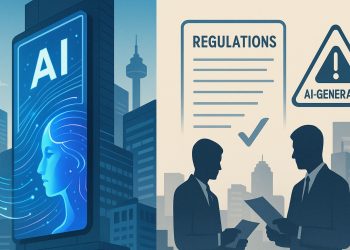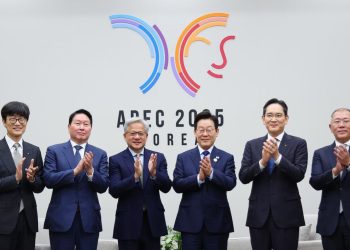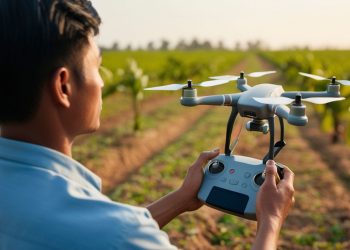South Korean tech leader ramps up AI infrastructure and GPU investments to expand next-generation robotics and cloud businesses
South Korean internet giant Naver Corp. is making a decisive move to strengthen its artificial intelligence (AI) capabilities with a 1 trillion won ($690 million) investment in graphics processing units (GPUs) starting next year. The large-scale investment is aimed at expanding Naver’s AI infrastructure and advancing its next frontier — physical AI, a technology that integrates digital intelligence with real-world systems such as robots, logistics, and autonomous platforms.
The announcement was made during Naver’s third-quarter earnings call, where Chief Financial Officer Kim Hee-cheol said the company’s AI initiatives have begun generating measurable business outcomes. Kim noted that capital expenditure will increase progressively, reflecting the growing adoption and monetization of AI across Naver’s ecosystem.
A Strategic Shift: From AI Software to AI Infrastructure
Naver’s Chief Financial Officer Kim Hee-cheol shared that the company plans to allocate around 1 trillion won exclusively for GPUs, reflecting a broader push to expand its AI infrastructure and cloud capabilities. As part of this strategy, Naver has finalized an agreement with Nvidia to acquire 60,000 units of its latest Blackwell GPUs — the largest quantity secured by any South Korean firm in the U.S. chipmaker’s recent supply deal.
This investment is part of Nvidia’s broader 14 trillion won (US$9.5 billion) commitment to supply 260,000 GPUs to South Korean corporations, including Samsung, SK Group, Hyundai Motor Group, and Naver Cloud. The partnership underscores how Korean technology players are moving quickly to secure advanced AI computing power as global competition intensifies.
Physical AI: Bridging the Digital and Real Worlds
The GPUs will serve as the computational backbone of Naver’s physical AI projects, which aim to deploy AI that can operate autonomously in real-world environments. This includes robotics systems, digital twins for smart cities, and autonomous workplace platforms.
The company plans to use these computing resources not just for in-house AI operations, but also to generate new revenue through GPU-as-a-Service (GPUaaS) — renting GPU capacity to external clients in both public and private sectors. This move aligns Naver’s infrastructure expansion with a recurring revenue model, ensuring that investments in high-end hardware directly translate into new income streams.
Naver’s AIaaS and GPUaaS offerings are already contributing to its enterprise division’s 150 billion won in quarterly revenue, which grew 3.8% year-on-year, reflecting early demand for high-performance AI computing services.
Foundation Built on Years of Research
Naver’s pursuit of physical AI is not new. Its research arm, Naver Labs, has been developing robotics and AI-driven navigation systems since 2017. Key innovations include:
- ARC – a robotics operating system that coordinates multi-robot and human environments.
- ALIKE – an indoor positioning system that supports autonomous navigation.
These technologies are being tested at Naver’s headquarters, demonstrating the company’s ambition to apply AI and robotics beyond software — integrating them into industrial and commercial settings.
CEO Choi Soo-yeon described physical AI as the “next growth pillar” for Naver, saying it will “combine robotics, data, and generative AI into an ecosystem that transforms both digital and physical industries.”
Record Financial Performance Backed by AI Growth
Naver’s expanding AI business has already begun to reshape its financial profile.
For Q3 2025, Naver recorded:
- Revenue: 3.14 trillion won (↑15.6% YoY)
- Operating profit: 570.6 billion won (↑8.6% YoY)
- Net profit: 734.7 billion won (↑38.6% YoY)
This marks Naver’s strongest quarter ever, with AI integration emerging as a key growth driver. CFO Kim emphasized that the company’s physical AI expansion will create “revenue-linked investment opportunities,” especially as GPUaaS gains traction among corporate and institutional clients.
“On-Service AI” Expands Across Naver’s Platforms
Naver’s broader AI strategy, known as “on-service AI,” is centered on embedding AI features across its ecosystem — including search, e-commerce, content, and fintech.
CEO Choi explained during the earnings call:
“To achieve the value of on-service AI, we have focused on advancing AI integration across our services and businesses, which has led to tangible results. As the era of AI agents approaches, we will broaden AI adoption across more areas to strengthen competitiveness and drive global growth.”
Key developments include:
- AI Briefing: A generative AI feature that summarizes and contextualizes search results. It now covers 15% of queries, up from 10% at launch, and is expected to reach 20% by year-end, with 30 million users.
- AI Shopping Assistant: Launching in spring 2026, enabling conversational product recommendations.
- AI Personalization in Naver Plus Store: Expanding from 31% to 80%, improving product discovery and conversion rates.
These features demonstrate how Naver’s AI technologies are being commercialized directly into services that enhance user engagement and monetization.
Positioning for the Robotics Future
Beyond digital AI, Naver is intensifying efforts in robotics and autonomous control platforms. According to CEO Choi, the company’s robot operating system (OS) and control platform account for nearly 39% of the global robotics OS market — a testament to Naver’s growing technological competitiveness.
Choi stated,
“We are confident that our robotics technology is now at a world-class level, and we are focused on securing international references.”
This move places Naver in a unique position among South Korean tech companies — one that combines AI, robotics, and cloud infrastructure into a cohesive innovation ecosystem.
Outlook: AI Infrastructure as Naver’s Next Growth Engine
Naver’s dual-track strategy — building AI-driven consumer platforms while expanding industrial and infrastructure-level AI businesses — positions it as a key player in South Korea’s fast-evolving tech landscape.
The company’s aggressive GPU investments, deep collaboration with Nvidia, and rapid integration of AI across business units underscore its intent to compete not only as a digital service provider but as a global AI infrastructure company.
As AI continues to reshape industries, Naver’s vision of physical AI and GPUaaS-based monetization could become a blueprint for how tech firms evolve beyond software and into the physical, connected world of intelligent machines.







